[Swift 4], I used their helper class from here.
I modified the classes like below (Setup your desire string in refreshContent that you wanted):
import Foundation
import Charts
open class BalloonMarker: MarkerImage
{
open var color: UIColor?
open var arrowSize = CGSize(width: 15, height: 11)
open var font: UIFont?
open var textColor: UIColor?
open var insets = UIEdgeInsets()
open var minimumSize = CGSize()
fileprivate var labelns: NSString?
fileprivate var _labelSize: CGSize = CGSize()
fileprivate var _paragraphStyle: NSMutableParagraphStyle?
fileprivate var _drawAttributes = [NSAttributedStringKey : Any]()
public init(color: UIColor, font: UIFont, textColor: UIColor, insets: UIEdgeInsets)
{
super.init()
self.color = color
self.font = font
self.textColor = textColor
self.insets = insets
_paragraphStyle = NSParagraphStyle.default.mutableCopy() as? NSMutableParagraphStyle
_paragraphStyle?.alignment = .center
}
open override func offsetForDrawing(atPoint point: CGPoint) -> CGPoint
{
var offset = self.offset
let chart = self.chartView
var size = self.size
if size.width == 0.0 && image != nil
{
size.width = image?.size.width ?? 0.0
}
if size.height == 0.0 && image != nil
{
size.height = image?.size.height ?? 0.0
}
let width = size.width
let height = size.height
let padding = CGFloat(8.0)
var origin = point;
origin.x -= width / 2;
origin.y -= height;
if origin.x + offset.x < 0.0
{
offset.x = -origin.x + padding
}
else if chart != nil && origin.x + width + offset.x > chart!.bounds.size.width
{
offset.x = chart!.bounds.size.width - origin.x - width - padding
}
if origin.y + offset.y < 0
{
offset.y = height + padding;
}
else if chart != nil && origin.y + height + offset.y > chart!.bounds.size.height
{
offset.y = chart!.bounds.size.height - origin.y - height - padding
}
return offset
}
open override func draw(context: CGContext, point: CGPoint)
{
if labelns == nil
{
return
}
let offset = self.offsetForDrawing(atPoint: point)
let size = self.size
var rect = CGRect(
origin: CGPoint(
x: point.x + offset.x,
y: point.y + offset.y),
size: size)
rect.origin.x -= size.width / 2.0
rect.origin.y -= size.height
context.saveGState()
if let color = color
{
context.setFillColor(color.cgColor)
if(offset.y > 0) {
context.beginPath()
context.move(to: CGPoint(
x: rect.origin.x,
y: rect.origin.y + arrowSize.height))
context.addLine(to: CGPoint(
x: rect.origin.x + (rect.size.width - arrowSize.width) / 2.0,
y: rect.origin.y + arrowSize.height))
//arrow vertex
context.addLine(to: CGPoint(
x: point.x,
y: point.y))
context.addLine(to: CGPoint(
x: rect.origin.x + (rect.size.width + arrowSize.width) / 2.0,
y: rect.origin.y + arrowSize.height))
context.addLine(to: CGPoint(
x: rect.origin.x + rect.size.width,
y: rect.origin.y + arrowSize.height))
context.addLine(to: CGPoint(
x: rect.origin.x + rect.size.width,
y: rect.origin.y + rect.size.height))
context.addLine(to: CGPoint(
x: rect.origin.x,
y: rect.origin.y + rect.size.height))
context.addLine(to: CGPoint(
x: rect.origin.x,
y: rect.origin.y + arrowSize.height))
context.fillPath()
} else {
context.beginPath()
context.move(to: CGPoint(
x: rect.origin.x,
y: rect.origin.y))
context.addLine(to: CGPoint(
x: rect.origin.x + rect.size.width,
y: rect.origin.y))
context.addLine(to: CGPoint(
x: rect.origin.x + rect.size.width,
y: rect.origin.y + rect.size.height - arrowSize.height))
context.addLine(to: CGPoint(
x: rect.origin.x + (rect.size.width + arrowSize.width) / 2.0,
y: rect.origin.y + rect.size.height - arrowSize.height))
//arrow vertex
context.addLine(to: CGPoint(
x: point.x,
y: point.y))
context.addLine(to: CGPoint(
x: rect.origin.x + (rect.size.width - arrowSize.width) / 2.0,
y: rect.origin.y + rect.size.height - arrowSize.height))
context.addLine(to: CGPoint(
x: rect.origin.x,
y: rect.origin.y + rect.size.height - arrowSize.height))
context.addLine(to: CGPoint(
x: rect.origin.x,
y: rect.origin.y))
context.fillPath()
}
}
if (offset.y > 0) {
rect.origin.y += self.insets.top + arrowSize.height
} else {
rect.origin.y += self.insets.top
}
rect.size.height -= self.insets.top + self.insets.bottom
UIGraphicsPushContext(context)
labelns?.draw(in: rect, withAttributes: _drawAttributes)
UIGraphicsPopContext()
context.restoreGState()
}
open override func refreshContent(entry: ChartDataEntry, highlight: Highlight)
{
//setLabel(String(entry.y))
setLabel(String(format: "%.1f reps @ %.01f lb", entry.x, entry.y))
}
open func setLabel(_ label: String)
{
labelns = label as NSString
_drawAttributes.removeAll()
_drawAttributes[NSAttributedStringKey.font] = self.font
_drawAttributes[NSAttributedStringKey.paragraphStyle] = _paragraphStyle
_drawAttributes[NSAttributedStringKey.foregroundColor] = self.textColor
_labelSize = labelns?.size(withAttributes: _drawAttributes) ?? CGSize.zero
var size = CGSize()
size.width = _labelSize.width + self.insets.left + self.insets.right
size.height = _labelSize.height + self.insets.top + self.insets.bottom
size.width = max(minimumSize.width, size.width)
size.height = max(minimumSize.height, size.height)
self.size = size
}
}
Then I add the Balloon marker like below:
let marker:BalloonMarker = BalloonMarker(color: UIColor.black, font: UIFont(name: "Helvetica", size: 12)!, textColor: UIColor.white, insets: UIEdgeInsets(top: 7.0, left: 7.0, bottom: 7.0, right: 7.0))
marker.minimumSize = CGSize(width: 75.0, height: 35.0)
chartView.marker = marker
[Edit 1]
There is another method see below, you can consider adding additional data as an AnyObject & get the data value in refreshContent. or you can modify the BalloonMarker class by using dictionary mapping.
ChartDataEntry(x:Double, y: Double, data: AnyObject?)

